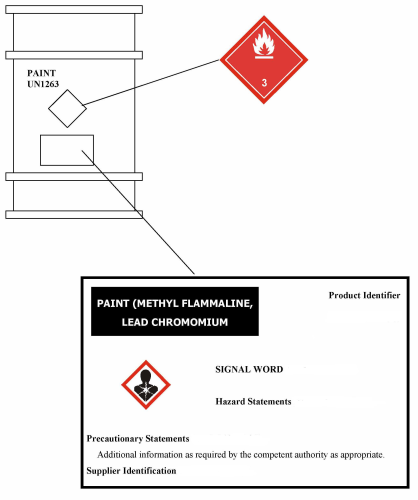
The GHS, which was adopted by the United Nations in 2002, has already been adopted by China, Japan, and the European Union in an effort to facilitate global trade in chemicals under a uniform cataloging umbrella. Although the proposed changes to the Hazardous Communication Standard (HCS) currently required by OSHA are in their preliminary comment period, the revisions have the potential to impact more than 40 million workers nationwide at nearly five million establishments, according to the Department of Labor’s Sept. 30 announcement. U.S. representatives participated in formulating the GHS standards, but adoption by the government was initially resisted because the country already employed the comprehensive HCS, aimed at protecting and informing individuals about safety hazards when working with, or around, hazardous chemicals.
OSHA outlined four major proposed changes to the current HCS, including: hazard classification; label revisions; standardized safety data sheets; and information and training requirements concerning procedural changes. The GHS standards provide specific criteria for the classification of health and physical hazards of all chemicals and mixtures; the proposed amendments to the HCS would exclusively utilize the global health and physical classification criteria and nomenclature outlined in the GHS standards. In addition, chemical manufacturers would be required to use standardized labels on products that include uniform signal words, pictograms, hazard statements, and precautionary statements for chemicals distributed within the U.S. Furthermore, safety data sheets will be revised to include a standardized 16-section format. According to the Federal Register comments, the MSDS would henceforth be known as simply an SDS in an effort to conform to GHS standard designations. All of these proposed changes will require additional worker training, within two years of final publication of the rule change, in order to promote “recognition and understanding of the new labels and safety data sheet,” as stated in OSHA’s fact sheet concerning the rules changes.
OSHA anticipates a three-year preliminary phase-in period for the GHS system that would include several transition costs to be incurred by affected industries. Among these: reclassification of all chemicals; training of workers regarding new label components and safety data sheet configuration; and additional education of employees for familiarization with the latest GHS mechanisms and terminology. Employers would have two years from publication of the final rule to retrain and inform employees of the new standards, with a final compliance date coming at three years after publication.
Assertions from OSHA and the Department of Labor indicated minimal additional regulatory burden or costs for employers as a consequence of GHS implementation. However, an OSHA statement on the proposed standard acknowledges there will be up-front costs but anticipates that ongoing conformity expenditures would be equal to or perhaps even lower than those required under the current HCS procedures. Items like standardized safety sheets are intended to “enhance worker comprehension, ensure appropriate handling and use of chemicals, and reduce chemically related fatalities, injuries, and illnesses,” Barab noted, while at the same time reducing burdens on manufacturers of chemicals, which are often required to create numerous labels and safety sheets to comply with divergent regional standards.
Hazardous chemical labels will take on a slightly different appearance under the GHS standards, with uniform labels that will provide more information than is currently required under the HCS. GHS label elements will include: • Product identifier • Signal word • Hazard statement(s) • Pictogram(s) • Precautionary statement(s) • Name, address, and telephone number of the chemical manufacturer, importer, or other responsible party • Supplemental information, as appropriate
Additional compliance costs under the GHS system would stem from education of personnel on the elements and recognition of these new labels, in addition to familiarization with the standardized 16-section SDS. OSHA’s HCS system makes use of only two pictograms for chemical labeling, whereas GHS will expand on the “skull and crossbones” and “flame” pictograms to include representations of corrosiveness, environmental hazards, and carcinogenicity, among others. These additional pictograms will be used in conjunction with two distinct signal words, which convey imperative chemical hazard information to handlers and users of a particular substance.
OSHA also anticipates additional savings from implementation of the GHS. Through a combination of reduced on-site fatalities and injuries with expected productivity improvements, OSHA estimates that total nationwide facility savings resulting from adoption of the GHS standards may reach $754 million per year.
According to Barab, a change in chemical information reporting via GHS is only the initial component of OSHA’s sweeping agenda to address workplace health and safety procedures under the Obama administration. “This proposal marks the first major health rulemaking of this Administration,” he noted during initial remarks announcing the anticipated rule change. Barab would go on to send up a cautionary flare, warning “[this] is the first of many steps in the months to come that will demonstrate OSHA’s renewed commitment to an aggressive regulatory agenda.”
Interested parties can tender written comments on the proposed move toward GHS, including remarks on OSHA’s information collection, by Dec. 29, 2009. Comments can be submitted electronically via the government’s online rulemaking portal and all comments should include the appropriate docket number for this proposed rule change, OSHA–H022K–2006–0062. More information about submitting comments via mail or fax can be found at OSHA’s website. OSHA will hold public hearings on the rule change, but details have not yet been made public and will be announced in a future edition of the Federal Register.


